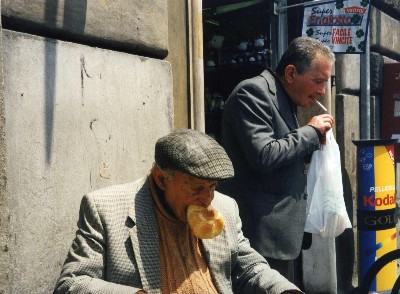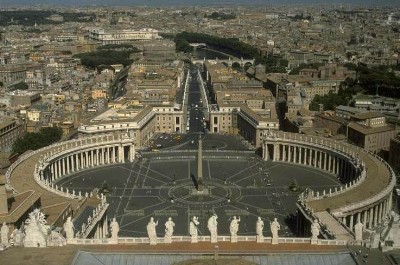|
|
 |
|
Honors in Rome 2005: Crossing the Threshold |
|
written
by cgiacomi / 08.08.2005 |
|
|
| |
Overview |
| |
| |

|
|
| The Campo de' Fiori with the UWRC in the background, on the left |
|
| |
|
The Honors Program is excited to offer its third annual study abroad program in Rome. Rome is a legendary crossroads of ancient and modern culture whose monuments and artistic treasures have attracted visitors for centuries. In the 1700s, many Europeans undertook the Grand Tour—a challenging journey across Europe that included Rome as a prime destination. Once in Rome these tourists often stayed for an extended period, traveling to nearby towns and important ancient sites. In contact with the touchstones of the Classical past, they forged their personal, intellectual, and civic identity. This summer, Honors students will undertake a similar cultural pilgrimage through the art and architecture of the city.
This seminar will be based at the UW Rome Center, housed in the 17th century Palazzo Pio in the heart of historic Rome—the Campo de’ Fiori. This piazza is an open-air fruit and vegetable market by day and a gathering place by night. The Rome Center provides classroom space, a computer lab, a library, and logistical assistance.
|
| |
|
| |
|
| |
Communicating in Italian |
| |
| |

|
|
| Soon the students will be communicating with the locals! |
|
| |
|
ItaliaIdea Language School
Students will be encouraged to use the Italian language while in Rome. To this end, we will work with one of Rome’s most outstanding language schools—ItaliaIdea. Upon arrival, students will participate in an intensive orientation on important cultural skills that will enable them to navigate Rome with confidence. Students will also attend “survival Italian” classes that will familiarize them with idiomatic expressions, the basic rules of grammar and proper pronunciation.
|
| |
|
| |
|
| |
Crossing the Threshold: A Writing Studio and Art Historical Exploration |
| |
| |

|
|
| Piazza of St. Peter's Basilica |
|
| |
|
Shawn Wong, English Professor & Honors Director
Lisa Schultz, Art Historian
Throughout their history, Romans have been interested in boundaries, entries and gateways, both psychological and physical. This course will challenge students to think about how approaches were considered, controlled, and guided by a variety of methods and with programmed outcomes in mind. By observing Rome’s art, architecture, monuments, and urban fabric, the orchestration of the viewer will be analyzed in order to guide students on a focused investigation into the creation and function of Rome’s visual culture. Students will investigate triumphal entries of the emperors, ceremonial processions of the popes, pilgrimage routes to and within the city, access to churches and palazzi and the incorporation of public spaces into the city’s urban planning. We will also examine individual artworks and their surroundings and explore the devices used to enter a viewer into a painting or a sculpture.
In addition, students will “read” Rome in the writings of authors such as D.H. Lawrence, Henry James, and Edith Wharton. Rome has always been a powerful symbol, not only during its rise as an empire but also in the 20th century in terms of literature, culture, and history. It is a city of contradictions—acting as the center of Roman Catholicism and pre-Christian paganism, of immense beauty and infamous ruin, and of opulent antiquity and contemporary extravagance. Few cities in the world can provide students with such an inspiring and memorable landscape to work from.
Students will take an active role in presenting key monuments to the
class based on advance research begun in Seattle and will work on “reading and writing” Rome.
|
| |
|
| |
|
|
 |
|
